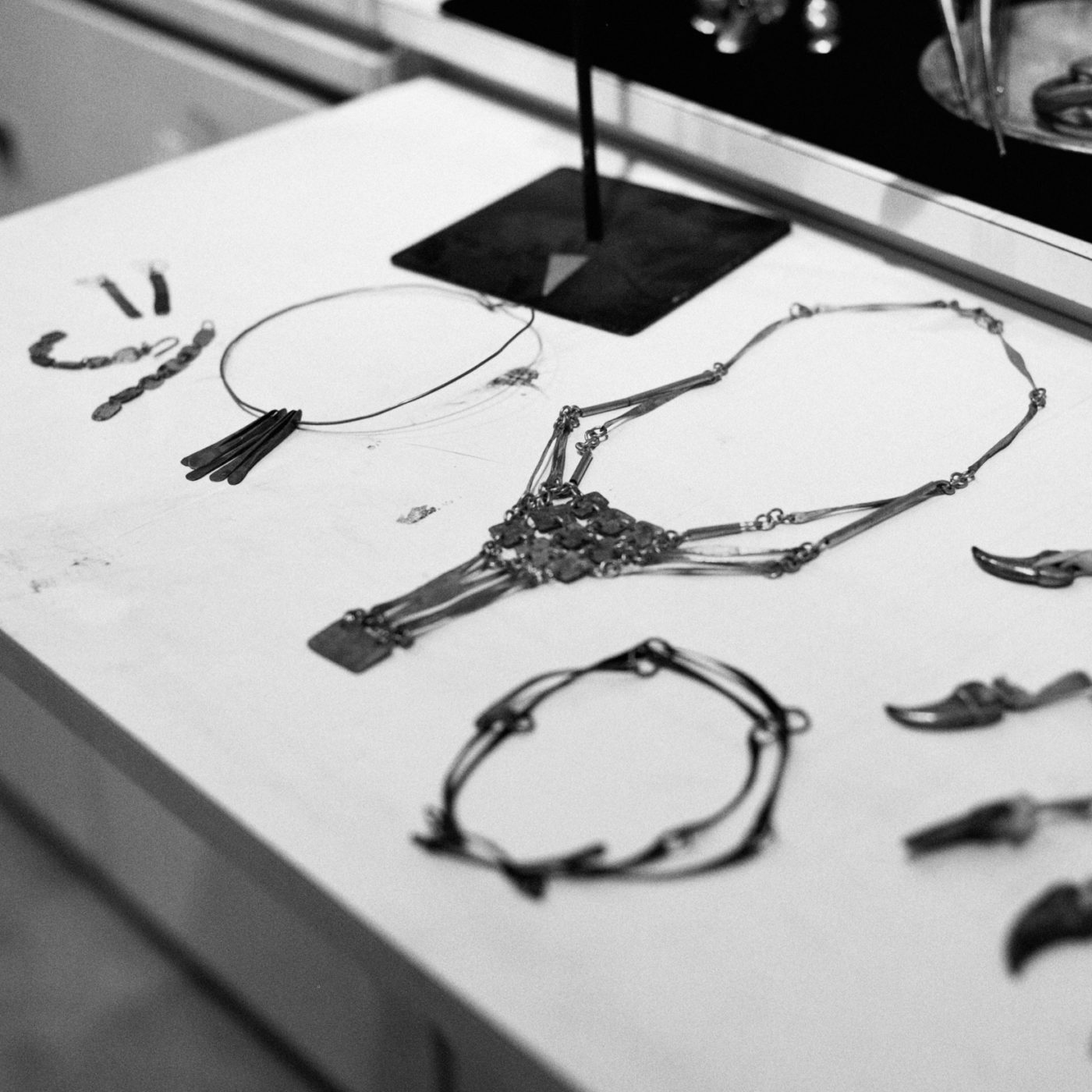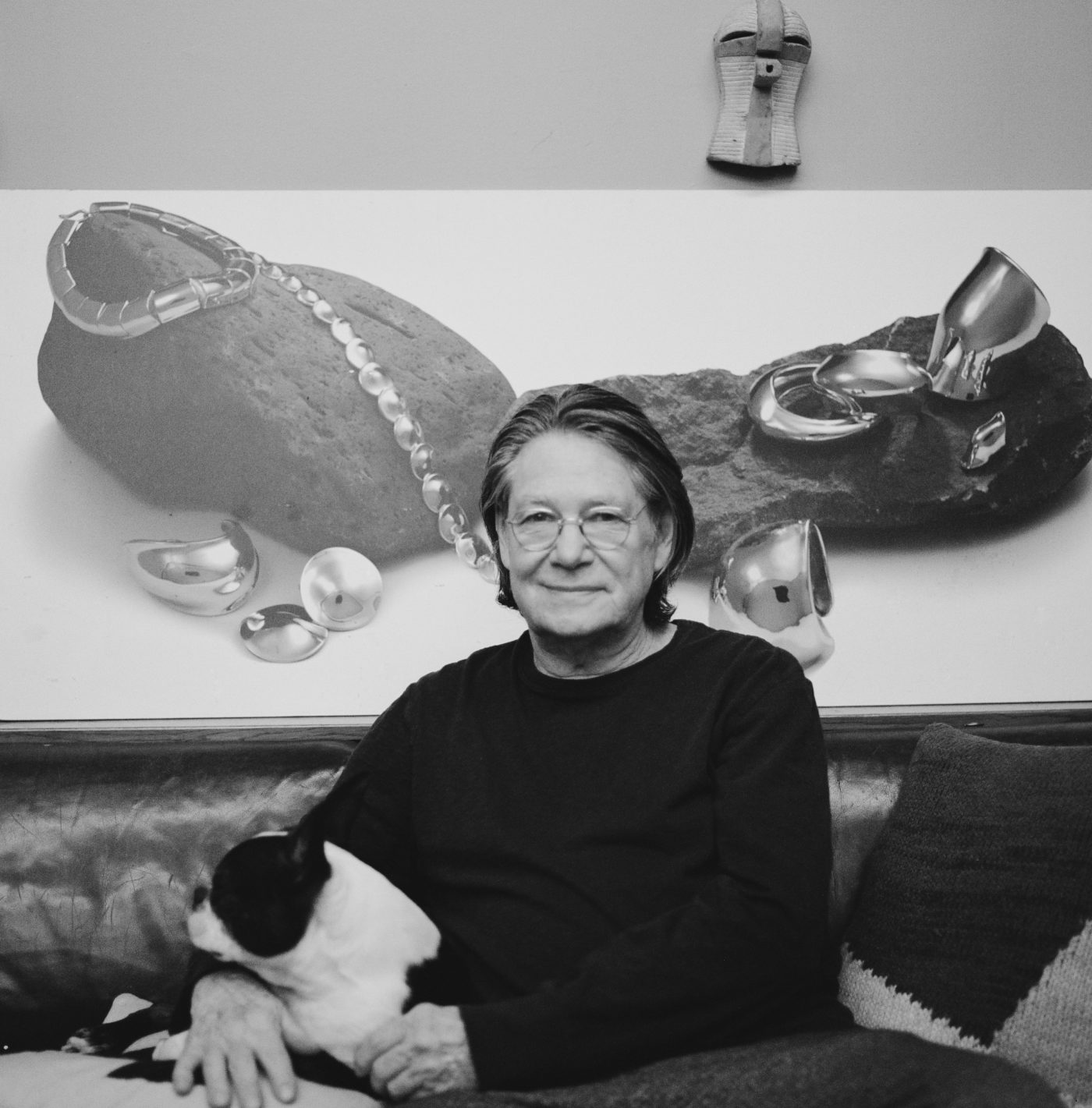A Master of Craft
It’s not everyday you have the opportunity to meet a living legend like Robert Lee Morris. Having collaborated with some of the most iconic names in fashion such as Karl Lagerfeld and Donna Karan (to name two,) Robert built his extraordinary legacy by creating and curating the previously unimaginable. During my recent trip to the East Coast with NYC Jewelry Week, I had the opportunity to meet Robert in person at his studio in rural Connecticut. What he shared with us is a luminous, avant garde perspective, but to fully understand it we first had to dive into his past.



Casting a Hammer
Robert’s initial foray into the world of sculpture was in school through lost wax casting. “I didn’t like this medium…” he explained as he showed me one of his first bronze sculptures, “I developed this drippy aesthetic, and it didn’t speak to me. But, I had no choice at the time…the school required me to learn through this method.”
After graduating College, Robert would break free from the rigor of academic theory to form an artist commune in rural Wisconsin. It would be here, working in an almost nomadic fashion, that he received his real education – one of self-discovery and expression.

“It was there [at the commune] that I taught myself how to make jewelry…” Robert explained, “…I had no money for tools so I worked with a piece of rail[road] as an anvil, a hammer, and a hand-powered drill…you know the old kind you had to hand-crank.” Pulling down a few select pieces suspended amongst his many creations, he continued, “You see, I made these very rudimentary designs from cut metal and everything was cold-forged together because I didn’t have access to a torch.”
Despite the technical and material challenges that faced Robert at the time, you can see the foundation of genius within these early jewels which guided his work – work that would soon make him famous in the jewelry, fashion and art scenes.



Feeling the Power
After legendary Manhattan art dealer Joan Sonnabend discovered Robert, it took just a few short years for him to be transported from the rural countryside into the beating heart of 1970s Soho, and soon to the cover and pages of Vogue Magazine. “My career took off like a rocket…” he shared, “The energy of lower Manhattan pushed me into a frenzy of self-expression. I created modern body armor, bold and dramatic shapes with tremendous volume, and cinematic blends filled with sci-fi ideas and multicultural references.”
Pulling open a drawer Robert handed me a brass bangle covered in floral drops, titled “Korean Bangle,” he created for Kansai Yamamoto in 1984. Shaking my wrist, the ornament came to life, releasing its sweet ethereal tune, transporting me to a moment of pure wonder and power. Robert began, “You can just imagine it…models walking the runway with these stacked three or four high, the sound was just incredible.” “Incredible,” is an understatement—Robert’s work goes beyond making you feel confident in your skin, it makes you feel like a god, invincible.
Invincibility is at the very core of Robert’s work and is a value that clearly extends beyond his craft. In the fall of 1977, Robert took the leap of faith to open his gallery, ARTWEAR.
“Nobody could figure out how to represent my work within their stores or galleries…” he explained, “…what I was creating was too new and too far out there for people. So, I was forced to open my own space. I curated over 50 American designers, alongside my own work, in a yet-to-be-recognized category called ‘bridge’ or ‘designer’ jewelry.”
He continued:
“The publicity was instantaneous and the word of mouth business spread like wildfire. Soon all the major designers flocked to ARTWEAR to ask me for collaborations on their runway shows. For many, I was the father figure for this new category of jewelry. For myself, I was answering my calling.”


“For many, I was the father figure for this new category of jewelry.
– Robert Lee Morris
For myself, I was answering my calling.”

Scaling Up 16ft.
Once immersed in Robert’s studio, you come to realize that you’re standing in a cathedral of creation. Cues to ventures past and present surround you, bifurcated reeds with brass leaves (a spur of the moment materials experiment) reach for the heavens as lamps tucked in corners with forged shades of brass glow like candles in the darkened space, hinting at his current focus.


“It all started with one…” Robert shared as we walked up to a goliath 16’ suspended structure of hand-forged brass panels painted in an ombre white finish, he continued “…I was approached by an interior designer to create a chandelier for a private client. It was so well received, I now have two more commissions.”
Circling around the luminous sculpture, you see Robert’s masterclass of skill in full splendor. Elements of bold runway looks, golden-hued textures, and smooth figural forms reminiscent of his body casts with their white painted finish, are all warmed by the radiance of Edison-style light bulbs. Combined, they create an homage to his past and a vision of the future.

Editorial written and photographed by Nicholas Hyatt; all image credits belong to Nicholas Hyatt and cannot be used or republished without written consent. Find Nicholas at his site Ping Pong Ring and @pingpongring.
Our sincere thanks to Robert Lee Morris for welcoming us into his studio for this feature. Explore more from his world at robertleemorrisgallery.com and follow him @robertleemorrisgallery.
Feature edited, compiled, and formatted by Future Heirloom Editor Jackie Andrews in collaboration with NYCJW co-founder JB Jones.

